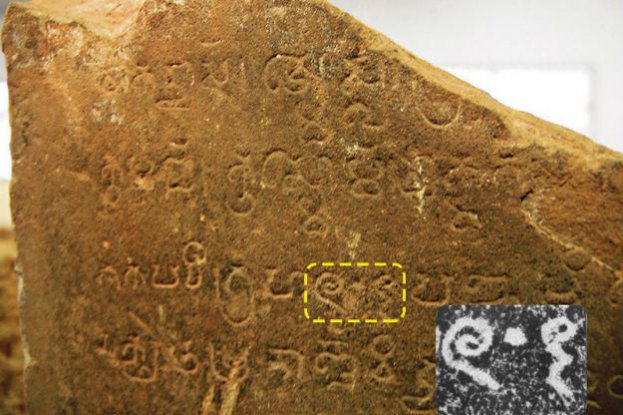The National Museum of Cambodia in January will exhibit what is considered by some experts to be the world's oldest zero symbol, a dot in a set of script from the Khmer civilisation carved into sandstone.
'The Chaka era has reached the year 605 on the fifth day of the waning moon,' says the restored inscription discovered during the end of the 19th century at the Trapang Prei archaeological site in Kratie province, in northeastern Cambodia.

Archaeologists date this phrase to 687 AD, in pre-Angkor Cambodia.
This Khmer inscription was discovered by French archaeologist Adhemard Leclere (1853-1917) in 1891, but his colleague and compatriot George Coedes (1886-1969) later classified it with the name K-127.
Coedes and American mathematician Amir Aczel (1950-2015) defended the significance of K-127 as it strengthens the idea that the zero symbol's origin in the decimal number system comes from India or, in his word, other 'Indianised' East Asian cultures.
The oldest zero that is known of and in the form of a circle, rather than a dot, comes from India and from the year 876 AD, almost two hundred years earlier than the one at the National Museum of Cambodia.
The Indian manuscript Bakhshali also contains zeros that could be prior to K-127, but the experts are unable to determine their antiquity with current technology due to the fragility of the object.

According to anthropologist Miriam Stark from the University of Hawaii and an expert on Cambodia, the numeral system was fundamental for constructing temples during the Khmer empire or Angkor Empire (802-1431), such as the famous UNESCO World Heritage site, Angkor Wat complex, in the northern city of Siem Reap.
The capital of this empire, Angkor, was the largest urban complex in the preindustrial world, with a population of about one million people living in 1,000 square kilometres of territory, according to Damian Evans, Christophe Pottier and other anthropologists.
Inscriptions like the K-127 help us learn about the past, according to Socheat, and the history of the numbers.
Source : Sky News


















